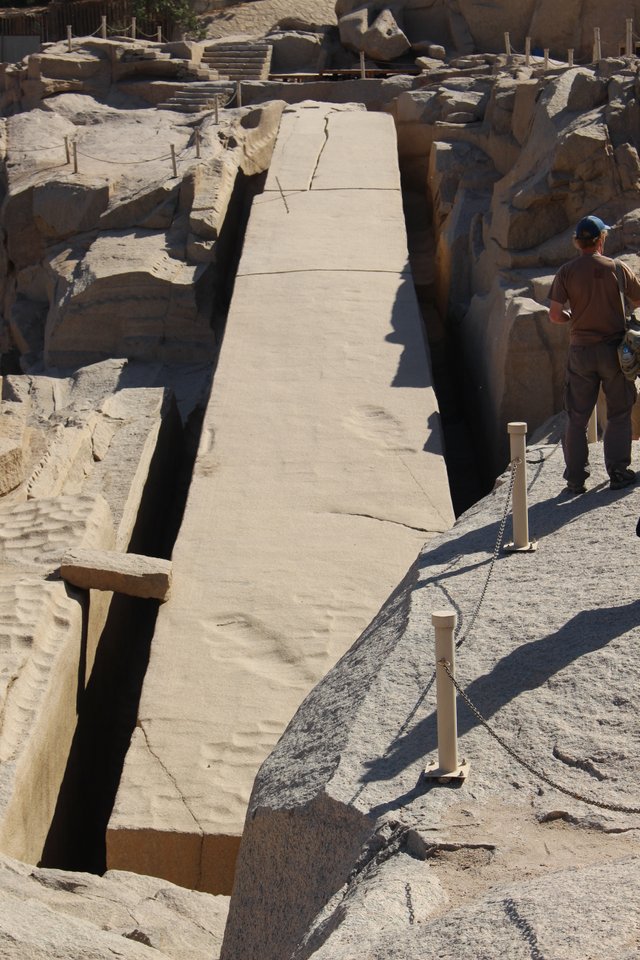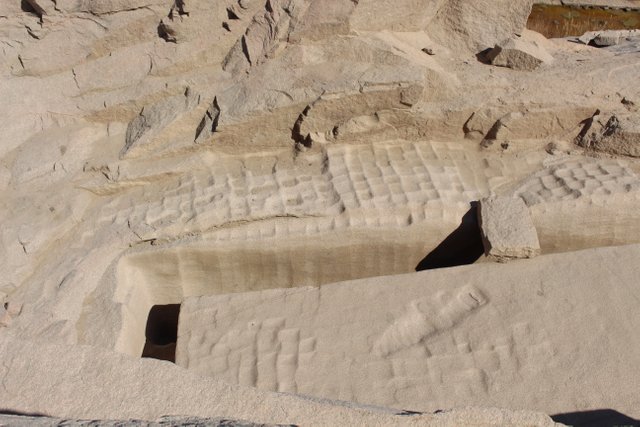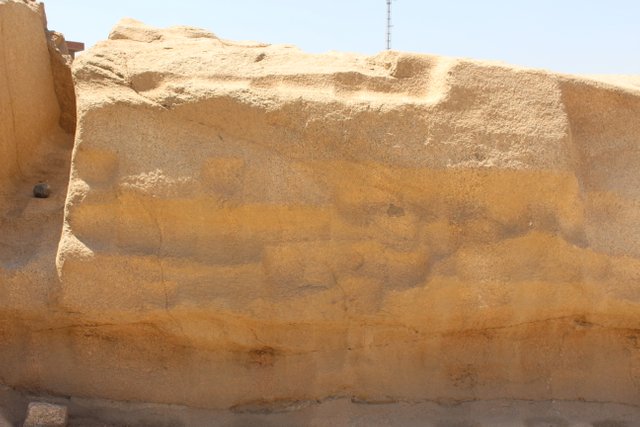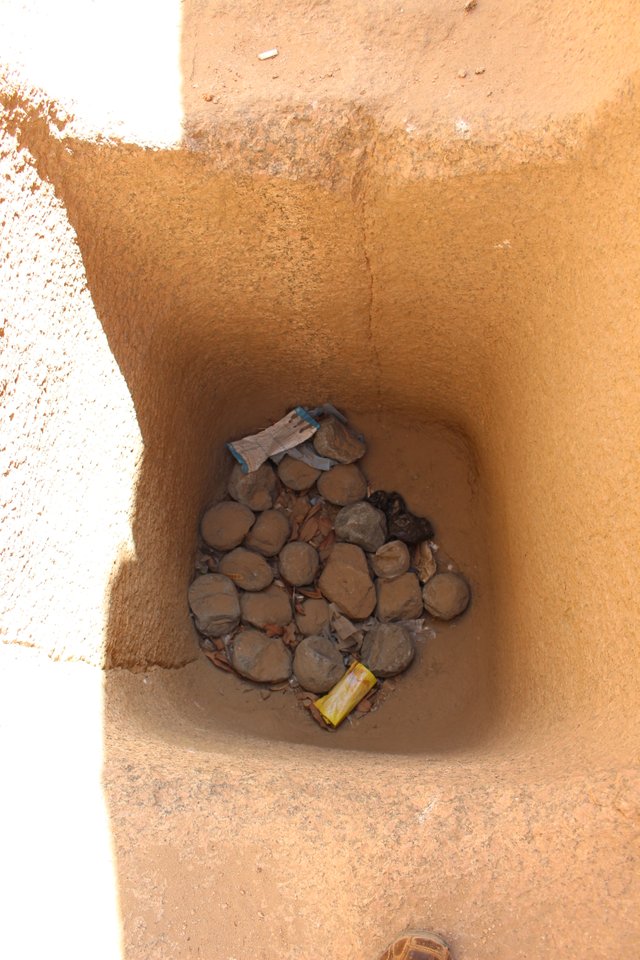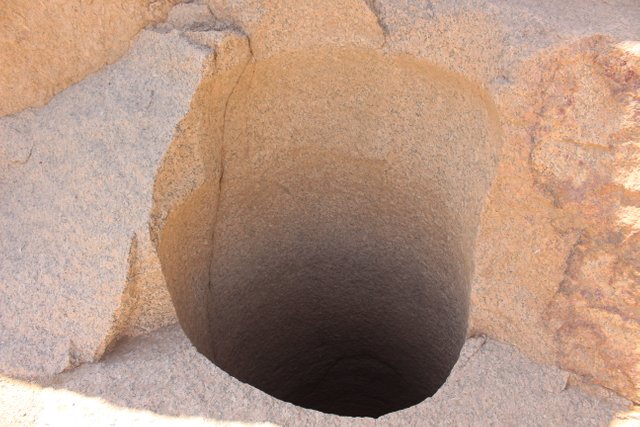Aswan Quarry, Egypt
The manufacture of obelisks at the Aswan Quarry is attributed by historians and Egyptologists to 'fire-setting' - a technique where the areas to be excavated were heated with fires, then dowsed with cold water. This had the effect of cracking and crumbling the rock which was then pulverised with dolerite or diorite pounding balls and removed.
Unless the ancient workers used a large, primitive lens to focus the sun's rays upon each area to be excavated (and were simply blessed with continuous sunny, cloudless days) there are problems with the theory of fire-setting: Firstly the amount of fuel (most likely wood) needed to set all of these fires and produce the many 'scoop' marks found in the Aswan Quarry would be astronomical (and Egypt is not a country known for its abundance of forests).
Secondly, these 'scoop' marks are also found on vertical faces in the quarry and thirdly, the production of the test-pits (created to assess the quality of the rock beneath) would be extremely difficult without a means of pumping oxygen into the base of each pit to keep the fire going.
This circular pit also has a flat base all the way to the sides - which is geometrically impossible to produce with a round ball.
Primitive stoneworking techniques may explain some of the things found at the Aswan Quarry - but not all.
